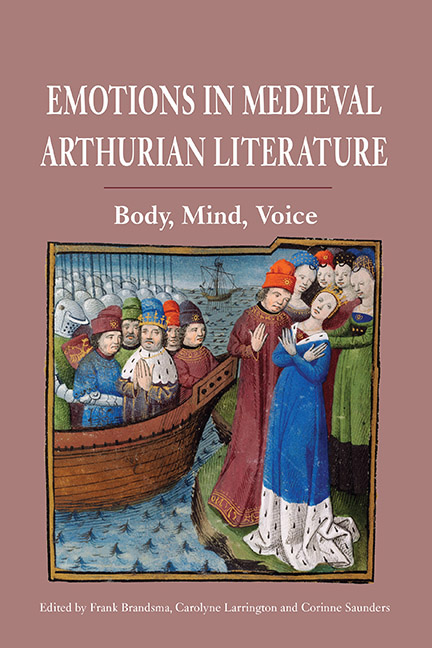9 - Translating Emotion: Vocalisation and Embodiment in Yvain and Ívens Saga
Published online by Cambridge University Press: 21 May 2021
Summary
In Chrétien's Yvain, Laudine, the mourning widow, cries out, faints, claws at herself and tears out her hair at the death of her husband, Esclados the Red. In Laxdoela saga, one of the Icelandic sagas, on the other hand, the heroine, Guðrún Ósvífrsdóttir, smiles as one of her husband's killers uses her shawl to wipe the blood off the weapon that killed her husband. We in fact see no evidence of grief on her part until twelve years later, when she goads her sons to avenge the killing of their father by taunting them with their father's bloody clothes. There is not a single exclamation of grief: no tears, no fainting, nor any other visible signs of sorrow. In Brennu-Njáls saga, one of the better-known sagas, another heroine, Hallgerðr Höskuldsdóttir, similarly laughs at the news of her husband's slaying before sending the perpetrator to her father, where he will be killed himself. How does one reconcile such different demonstrations of emotional behaviour when comparing one cultural realm to the other – or are these two scenes as different as one might believe?
Some might argue here that I am comparing apples and oranges by juxtaposing scenes from a French romance with examples from the Icelandic sagas. Yet it is precisely in the comparison between the two that the cultural premise of emotional representation can be most fruitfully explored. If the saga examples represent a particular (cultural or literary) mode of feminine bereavement behaviour, how would the distinctly different performance of the French heroine be transmitted and received?4 While the saga material by no means comprises the only literature read or enjoyed by Icelandic medieval audiences, the examples cited are nevertheless representative of the type of literary material that was being written and copied alongside the translated romance material and later indigenous romances.
The topic of this chapter is the translatability of literary representation of emotion across linguistic and cultural boundaries. The central premise is that of the stability of emotional representation and categorisation across cultures.
- Type
- Chapter
- Information
- Emotions in Medieval Arthurian LiteratureBody, Mind, Voice, pp. 161 - 180Publisher: Boydell & BrewerPrint publication year: 2015
- 3
- Cited by



